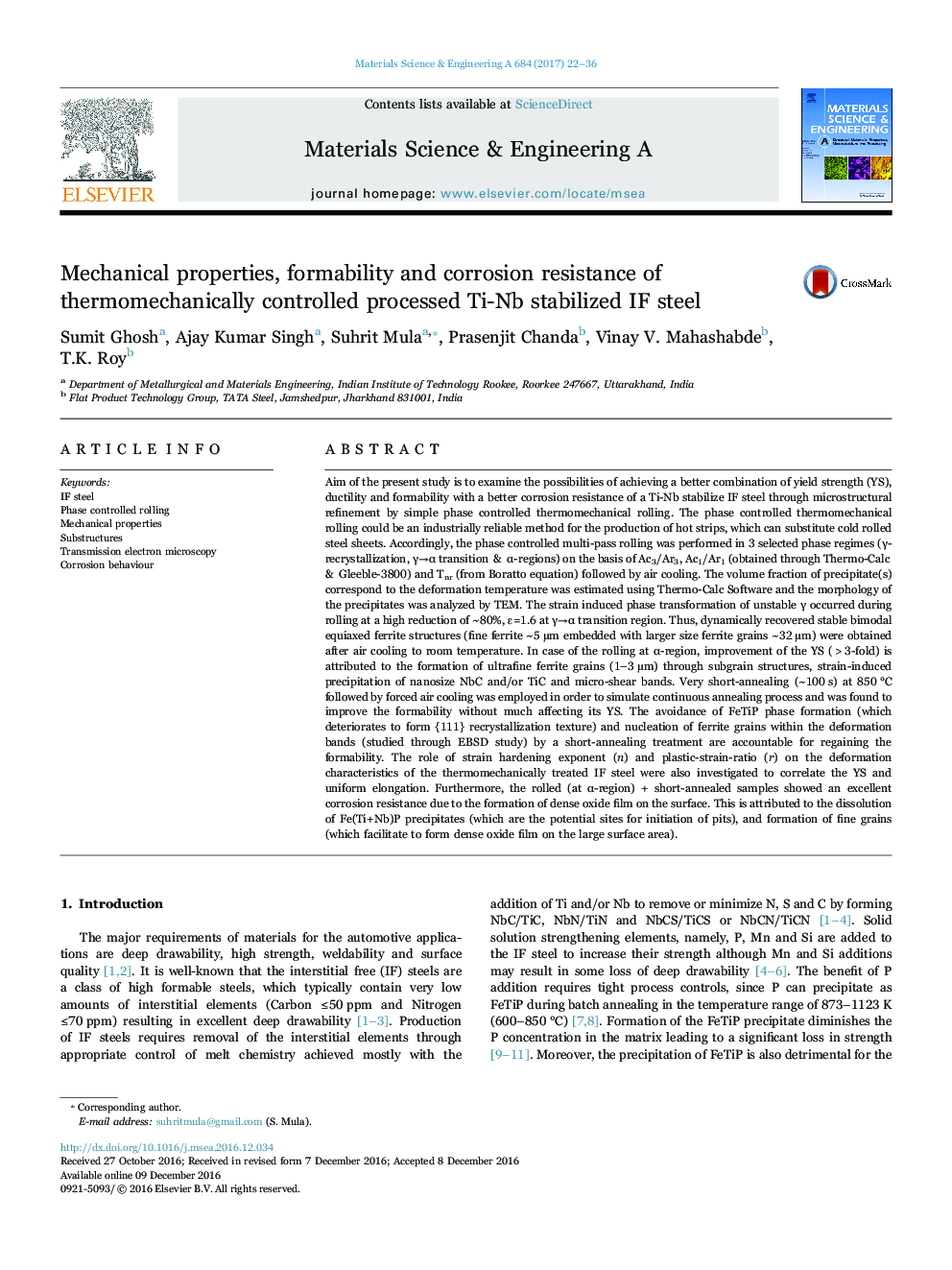| Article ID | Journal | Published Year | Pages | File Type |
|---|---|---|---|---|
| 5456284 | Materials Science and Engineering: A | 2017 | 15 Pages |
Abstract
Aim of the present study is to examine the possibilities of achieving a better combination of yield strength (YS), ductility and formability with a better corrosion resistance of a Ti-Nb stabilize IF steel through microstructural refinement by simple phase controlled thermomechanical rolling. The phase controlled thermomechanical rolling could be an industrially reliable method for the production of hot strips, which can substitute cold rolled steel sheets. Accordingly, the phase controlled multi-pass rolling was performed in 3 selected phase regimes (γ-recrystallization, γâα transition & α-regions) on the basis of Ac3/Ar3, Ac1/Ar1 (obtained through Thermo-Calc & Gleeble-3800) and Tnr (from Boratto equation) followed by air cooling. The volume fraction of precipitate(s) correspond to the deformation temperature was estimated using Thermo-Calc Software and the morphology of the precipitates was analyzed by TEM. The strain induced phase transformation of unstable γ occurred during rolling at a high reduction of ~80%, É=1.6 at γâα transition region. Thus, dynamically recovered stable bimodal equiaxed ferrite structures (fine ferrite ~5 µm embedded with larger size ferrite grains ~32 µm) were obtained after air cooling to room temperature. In case of the rolling at α-region, improvement of the YS (>3-fold) is attributed to the formation of ultrafine ferrite grains (1-3 µm) through subgrain structures, strain-induced precipitation of nanosize NbC and/or TiC and micro-shear bands. Very short-annealing (~100 s) at 850 °C followed by forced air cooling was employed in order to simulate continuous annealing process and was found to improve the formability without much affecting its YS. The avoidance of FeTiP phase formation (which deteriorates to form {111} recrystallization texture) and nucleation of ferrite grains within the deformation bands (studied through EBSD study) by a short-annealing treatment are accountable for regaining the formability. The role of strain hardening exponent (n) and plastic-strain-ratio (r) on the deformation characteristics of the thermomechanically treated IF steel were also investigated to correlate the YS and uniform elongation. Furthermore, the rolled (at α-region) + short-annealed samples showed an excellent corrosion resistance due to the formation of dense oxide film on the surface. This is attributed to the dissolution of Fe(Ti+Nb)P precipitates (which are the potential sites for initiation of pits), and formation of fine grains (which facilitate to form dense oxide film on the large surface area).
Keywords
Related Topics
Physical Sciences and Engineering
Materials Science
Materials Science (General)
Authors
Sumit Ghosh, Ajay Kumar Singh, Suhrit Mula, Prasenjit Chanda, Vinay V. Mahashabde, T.K. Roy,
